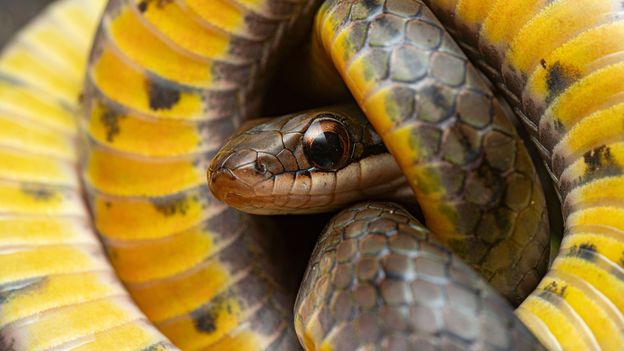Such defences aren’t bulletproof. Rattlesnakes are constantly evolving new venom to overcome the squirrels’ adaptations, Holding says, and even a rattlesnake will die if injected with enough of its own venom.
That’s why animals, even resistant ones, try, as a first defensive step, to avoid toxins. Hence the dragging behaviour of ground snakes, and the practice of some turtles to consume only the belly skin and innards of toxic newts, not the deadly back skin. Even insects like monarch caterpillars that are resistant to cardiac glycosides will nick the veins of milkweed plants to drain out the toxic fluid before tucking into the plant.
Co-opting toxins
Many animals also find ways to safely store toxic chemicals they consume and use them for their own purposes. The iridescent dogbane beetle, for example, gets cardiac glycosides from its host plants and then – probably via ABCB transporters – shuttles them onto its back for self-defence. “When you somehow annoy these beetles, you can see little droplets appear on their elytra, their dorsal surface,” Dobler says.
Through this kind of poison coopting, some insects become dependent on their host plants for survival. The relationship between the monarch butterfly and the milkweed plant is a prime example – and a prime example, too, of the long reach that such intertwined connections may have.
In a 2021 study, evolutionary biologist and geneticist Noah Whiteman of the University of California, Berkeley, and his colleague identified four animals that have evolved to tolerate cardiac glycosides, allowing them to feed on monarchs. One is the black-headed grosbeak, a bird that feasts on monarchs in Mexico’s mountaintop fir forests where the butterflies fly south to overwinter.

